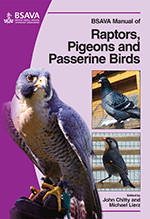
Full text loading...

Given the wide range of passerine species, having suitable reference texts available to allow an assessment of appropriate husbandry techniques is essential. Figure 36.1 provides a checklist of appropriate questions when taking a history and notes the potential significance of the answers given. This chapter considers clinical approach to flock mortality/morbidity, disease control and therapeutics.
Passerine birds: investigation of flock mortality/morbidity, Page 1 of 1
< Previous page | Next page > /docserver/preview/fulltext/10.22233/9781910443101/9781910443101.36-1.gif

Full text loading...

